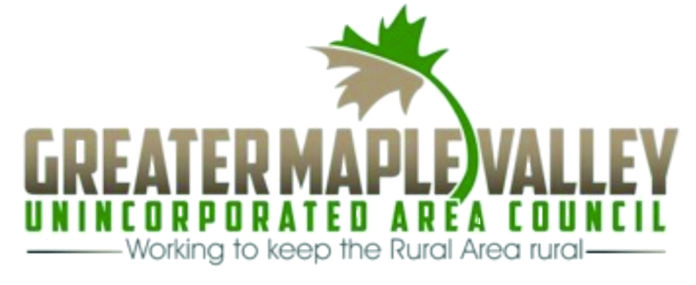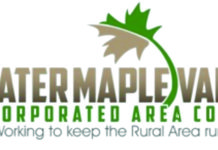The Area Council held its regular monthly meeting on Monday, February 1. Major topics discussed were: (1) Reserve Silica Mine Site Cleanup; (2) Countywide Planning Policies Update; (3) Community Needs; and (4) Cedar Hills Regional Landfill. Item (4) was extended to a Special Meeting held on Tuesday, February 2.
Tahoma School District (TSD) Update
TSD Board member, Val Paganelli, provided a summary. In-person of hybrid learning for K-2 started today. High School student, Olivia Tamer, gave an update on moving to a hybrid schedule for the high school and extracurricular activities.
Reserve Silica Mine Site Cleanup
Dr. Alan Noell and Tim O’Connor, Reserve Silica Mine Site managers for the State Department of Ecology (DOE) provided an update on the site in Ravensdale. Reserve Silica and previous owners and operators used the site (generally located at 28130 Black Diamond–Ravensdale Rd near Ravensdale) for coal through 1956 and sandstone mining until 2007. As part of site reclamation, the mine pits are being backfilled with materials from construction sites. Once the pits were mined out, reclamation was required starting in 1979. Environmental monitoring on site started in 1984.
Through the 1980’s a corrosive material called Cement Kiln Dust (CKD)—a fine-grained, solid, highly alkaline waste removed from kiln exhaust gas by air pollution control devices during the pro- duction of cement—was disposed of in two of the open mine pits: Lower Disposal Area – a former open pit sand mine reclaimed between 1979 and 1982 — and Dale Strip Pit – a former open-pit coal mine reclaimed in the 1980s. Both pits were filled and now are closed. Reserve Silica now is filling the final surface mine area with inert waste, under permits issued by Public Health Seattle King County (Public Health) and DOE.
One of the concerns with CKD is that when it comes in contact with water, it releases toxic metals. Groundwater moving through the CKD in the Lower Disposal Area pit has seeped to the surface. Groundwater and surface water contaminants include high pH (corrosive) water and toxic metals— including arsenic and lead. Contamination from this site has the potential to affect plants, wildlife, sur- face water, and groundwater on and near the property. Consequently, there are CKD reclamation efforts underway, which DOE is monitoring. There is a CKD leachate treatment system, which lowers the pH and attempts to filter out metals. Treated water then is sent to infiltration ponds, which seep down into the ground, which DOE also is monitoring.
An Agreed Order under the State’s Model Toxics Control Act (MTCA) still is in negotiation with Po- tentially Liable Parties, including a draft Remedial Investigation (RI) Work Plan (6/30/2020). The RI Work Plan objectives are to: (1) Determine chemicals of concern and (2) Sample groundwater in the most impacted areas—within the CKD landfill and beyond CKD landfill, e.g., potential impacts of ASARCO slag and mine spoils beneath the haul road. Several RI Activities have been completed: (10 Electromagnetic geophysics survey (Oct 2020); (2) Installation of well P-14 (Dec 2020); and (3) Sampling of wells P-14 and P-11 (Dec 2020). These evaluated concentrations of the chemicals of potential concern within the Lower Disposal Area (LDA) and near the seeps observed beyond the landfill boundary.
The initial sampling round from well P-14 included the expanded list of chemicals of concern, including: antimony, arsenic, beryllium, chromium, lead, mercury, nickel, selenium, silver, thallium, vanadium, and 2,3,7,8-substituted dioxins, and furans. The purpose of analyzing for this expanded list of in well P-14 was to evaluate the presence and concentrations of these compounds in groundwater located within the LDA in an area where saturated CKD is present and some of the highest conductivity readings were measured during the geophysical survey. If these chemicals of concern are leaching to groundwater from the CKD and other material disposed in the LDA, samples collected from well P-14 would be expected, based on the electromagnetic survey, to contain the highest concentrations generally detected within the LDA.
The analytical results indicate the following:
•Antimony, arsenic, and lead were detected in groundwater samples collected from both wells P-11 and P-14 at concentrations exceeding MTCA cleanup levels.
•Vanadium was detected in P-11 at a reported concentration that exceeded MTCA cleanup level. Vanadium was also detected in P-14 but at a reported concentration that was below the MTCA cleanup level.
•The estimated concentration of thallium reported in P-11 was slightly above the MTCA cleanup level, but the reported concentration was below the laboratory reporting limit, so the concentration is considered estimated.
•Beryllium, chromium, mercury, silver, and thallium were not detected in P-14.
•The concentrations of arsenic, chromium, lead, nickel, and vanadium reported in the groundwater samples collected from well P-11 were significantly higher (more than 200% higher) than the concentrations reported in the groundwater samples collected from well P-14.
•There were no dioxins or furans compounds detected above the laboratory reporting limits.
The Draft Cleanup Plan is expected in 2023. More information can be found on the Area Council’s web site: www.gmvuac.org, which has links to all related DOE materials and information.
Countywide Planning Policies (CPPs) Update
The CPPs currently are undergoing an Update. The CPPs serve as the guiding principles and policies for all Comprehensive Planning in King County (County, City, and Special-Purpose District), as well as County and City Zoning Codes. The CPPs tie in to all the work the Area Council previously has done on KCCP Updates, PSRC’s VISION 2050, and city Comprehensive Plans.
The CPPs are worked though the King County Growth Management Planning Council (GMPC) https://www.kingcounty.gov/depts/executive/performance-strategy-budget/regional-planning/Growth-Management/GMPC.aspx. The GMPC, consisting of elected officials from King County, Cities and Towns, Special Purpose Districts, and the Port of Seattle, is a deliberative body whereby recommendations are made through a process that requires 30% of the participants representing 70% of the population.
The Area Council is leading an effort of all the Rural Area UACs/UAAs to review and prepare/submit detailed Comments to King County. The first set of those comments—proposed Policy changes deal with: Environment, Development Patterns, Housing, Economy, Transportation, and Public Facilities & Services.
The first Joint Rural Area UAC/UAA Comments, submitted to King County officials on January 11, were a set of recommended CPP Policy Changes. Proposed policy changes were discussed at a GMPC Work Session held on January 27. The Joint Team will next work on a set of recommended changes to the CPP Chapters ahead of the February 24 GMPC meeting.
The Schedule for the CPP Update going forward is as follows:
Draft CPP Chapters to be released on February 24.
Public Review Draft of the CPP Update to be released in April/May 2021.
GMPC adoption of the CPP Update by June 30.
City approvals/comments by September 30.
Final submittal of the CPP Update to the Puget Sound Regional Council by December 31.
For further information please see: http://gmvuac.org/countywide-planning-policies/.
Community Needs List
The King County Department of Local Services (DLS) is gathering a list of community needs and priorities for the Greater Maple Valley/Cedar River Community Service Area (CSA). This will be a community-identified list of service, program, and capital improvement projects that King County will implement.
The first step in creating the Community Needs List is to create an initial catalogue of community requests. The Area Council discussed some ideas. The Area Council will ascertain more details on the process from King County DLS.
Cedar Hills Regional Landfill (CHRLF)
Following last Fall’s Area Council submittal of detailed comments on the Draft Environmental Impact Statement (DEIS) on the CHRLF’s Site Development Plan the Maple Valley City Council requested a presentation on the future of the CHRLF. The Area Council assigned the preparation of a presentation to its Environment Committee, which provided a draft presentation for review and comment.
At a Special Meeting on Tuesday, February 2, the Area Council continued discussion and finalized / approved the presentation, which is scheduled to be given to the Maple Valley City Council at its Monday, February 8, 7 PM, meeting. The presentation is posted on the Area Council website’s Cedar Hills Regional Landfill page: http://gmvuac.org/cedar-hills-regional-landfill/.
Upcoming Major Tasks
The Area Council discussed three major tasks on which it will be working in the new year.
Countywide Planning Policies (CPP) Update: [see discussion above]
Strategic Climate Action Plan (SCAP) Update: On August 20 the King County Executive submitted his Draft Plan to the King County Council, which assigned it to its Mobility and Environment Committee. The Area Council is leading an effort of all the Rural Area UACs/UAAs to review and prepare/submit detailed Comments to King County and to participate in Public Hearings possibly in March/April 2021.
Cedar Hills Regional Landfill (CHRLF) 2020 Site Development Plan Final Environmental Impact Statement (FEIS): The Area Council’s Environment Committee (http://gmvuac.org/environment) will review and prepare Comments on the FEIS as a followup to its detailed Comments on the Draft EIS submitted to King County in October (see: http://gmvuac.org/cedar-hills-regional-landfill/).
Upcoming Area Council Meetings
The next Area Council regular monthly meeting will be held on Monday, March 1, 2021, which will be another “virtual” meeting via Zoom—access information will be posted on the Area Council’s website www.gmvuac.org.
All regular monthly meetings are held on the first Monday of the month, from 7 – 9:30 PM. Meeting announcements are published in the Voice of the Valley, the Area Council’s website (www.gmvuac.org) and local NextDoor platforms. You can also find us on Facebook. All are welcome with each meeting beginning with an open Public Comment period. [When State restrictions are lifted, the Area Council will again meet face-to-face with members of the Public invited to attend and continue to invite Guest Speakers on topics of key local and regional interest. Meetings will be held at the Maple Valley Fire Station—SE corner of SE 231st St & SR-169 intersection directly across from the Police Precinct.]
Area Council Membership
Your Area Council serves as an all-volunteer, locally recognized advisory body to King County on behalf of all rural unincorporated area residents living in the Tahoma School District. The Area Council’s Vision Statement is:
“Our community’s Rural Character will be supported by facilitating strong local ties and communication between the public, organizations, and government; promoting locally owned businesses and supporting quality education; protecting the environment, and maintaining landowners’ rights and responsibilities; promoting controlled and well-planned growth with appropriate infrastructure; ensuring proper representation for rural interests and needs; and supporting the health and safety and the privacy of our vibrant community.”
The twelve-seat Area Council currently has three open seats. If you have an interest in joining please send an e-mail to: info@gmvuac.org or attend a monthly meeting and express your interest.
Citizens who are not members of the Area Council or do not live within the Tahoma School District still are eligible to join and serve on any of the Area Council’s three major subject-matter Committees: Environment, Growth Management, or Transportation, as well as the Ad Hoc Economic Committee, Public Relations Committee, and Train Show Committee. The Area Council welcomes your participation. For information on each of these committees please see the Area Council’s web site: www.gmvuac.org and use the drop-down menu under Committees. Thank you.









